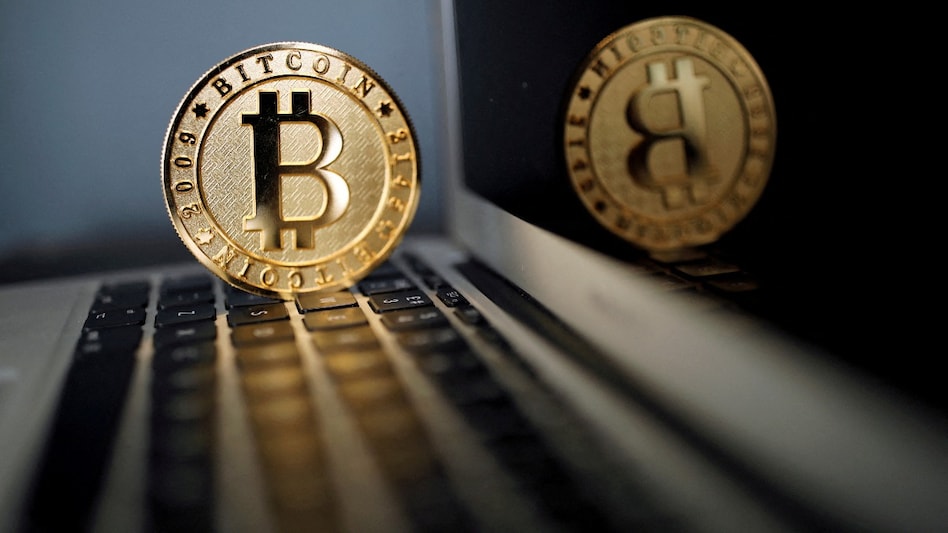Following the halving, Bitcoin’s market performance remained relatively stable, experiencing a slight decrease of 0.47% to settle at $63,747.
The mania in Bitcoin continues but other altcoins are lagging behind to mount new highs or break previous records.
Bitcoin, the world’s largest cryptocurrency, has recently undergone its much-anticipated “halving,” a significant event occurring roughly every four years.
Following the halving, Bitcoin’s market performance remained relatively stable, experiencing a slight decrease of 0.47% to settle at $63,747.
Enthusiasts of Bitcoin eagerly awaited this event, which marks a pivotal change in the cryptocurrency’s underlying technology aimed at reducing the rate of new Bitcoin creation. Satoshi Nakamoto, the pseudonymous creator of Bitcoin, incorporated the halving mechanism into the cryptocurrency’s code from its inception.
For some proponents of cryptocurrency, the halving underscores Bitcoin’s value as an increasingly scarce asset. Nakamoto had stipulated a finite supply of 21 million tokens for Bitcoin. However, sceptics perceive the halving as merely a technical alteration hyped by speculators to artificially inflate the virtual currency’s value.
The halving process entails reducing the rewards received by cryptocurrency miners for creating new tokens, thereby making it costlier for them to introduce new Bitcoins into circulation.
Parth Chaturvedi, Investments Lead, CoinSwitch Ventures said, “Today, we are at the cusp of Bitcoin’s era. The network is getting better utilised as Layer 2 solutions like Stacks bring broader adoption for the network. Other innovations like new token standards (Runes) and the re-staking of Bitcoin will also propel the ecosystem forward. If the landscape changes as anticipated after today’s halving event, it could ‘for the first time’ drive BTC’s annual inflation rate below that of gold. Such a scenario holds transformative potential, particularly among the younger generation, who may increasingly view Bitcoin as a modern-day store of value akin to how preceding generations regarded gold. This shift in perception could fundamentally reshape investment attitudes and strategies for years to come.”
Manhar Garegrat, Country Head India & Global Partnerships at Liminal Custody Solutions said, “The upcoming 4th Bitcoin halving may not be immediately discernible, there are several second-order effects to consider. Past halvings have often triggered heightened market volatility and increased trading activity. This time, we anticipate similar dynamics, potentially leading to price fluctuations and shifts in investor sentiment. The Bitcoin halving could influence the price of Bitcoin due to its increased scarcity leading to upward price pressure and influx of new investors in the crypto market. In addition to the potential impacts on altcoins, it’s worth considering the possibility of new products being introduced into the crypto market. Just as spot ETFs are being launched around the world, innovative financial instruments may emerge in response to the dynamics surrounding the Bitcoin halving offering investors alternative avenues for exposure to digital assets.”
Shivam Thakral, CEO of BuyUcoin, India’s second-longest-running digital asset exchange said, “Bitcoin’s price may experience short-term corrections or dips following a halving, but historical precedent suggests that the halving could catalyse significant shifts in the crypto market leading to a new all-time high in the upcoming months. Observing previous cycles, we may witness a notable decline in BTC dominance accompanied by a surge in interest and investment in altcoins within 12- 18 months of the halving.”
Jyotsna Hirdyani, South Asia Head at Bitget said, “Following the Bitcoin halving, the cryptocurrency market often experiences a period of heightened volatility and price discovery. Historically, post-halving phases have been characterised by significant market movements, with Bitcoin frequently reaching new all-time highs (ATH). The market’s resilience and the growing institutional interest in Bitcoin have fuelled optimism among investors, leading many to speculate on the potential for Bitcoin to reach unprecedented price levels.”
Rahul Pagidipati, CEO, ZebPay said, “With reduced block rewards, the Bitcoin protocol ensures that the asset remains deflationary through the halving process. In the long term, this supply reduction could attract more institutional and retail capital while amplifying Bitcoin’s stock-to-flow ratio. ZebPay is bullish about both the short-term as well as the long-term outlook for Bitcoin and the wider crypto market.”
Rajagopal Menon, VP, WazirX said, “Historical analysis of Bitcoin halving events reveals distinct market phases: a pre-halving rally driven by speculation, followed by a phase of reaccumulation post-halving, leading to a parabolic surge to new highs. This parabolic curve is already being witnessed with Bitcoin reaching its all-time high even before the halving event. This is an optimistic move given that usually the ATH is reached 6-12 weeks after the halving occurs.”
Edul Patel, CEO & Co-Founder, Mudrex said, “Historically, Bitcoin halving events have been associated with substantial price surges. For instance, during the first halving in 2012, Bitcoin’s price skyrocketed from $13 to a peak of $1,152 the following year. Similarly, the second halving in 2016 witnessed a surge from $664 to $17,760 in the subsequent year. The most recent halving in 2020 saw a surge from $9,734 to a staggering $67,549 in the following year. In April 2024, the fourth halving will reduce the mining reward to 3.125 BTC per block. Remarkably, Bitcoin has already breached the $73,000 mark in anticipation of this event. Investors should continue to do their own research and diversify their portfolio.”
This development follows Bitcoin’s recent surge to an all-time high of $73,803.25 in March, after gradually recovering from the dramatic plunge it experienced in 2022. As of Thursday, the leading cryptocurrency was trading at $63,800.
The excitement surrounding the US Securities and Exchange Commission’s approval of spot Bitcoin exchange-traded funds in January, coupled with expectations of interest rate cuts by central banks, has provided additional support for Bitcoin and other cryptocurrencies.
Previous halving events occurred in 2012, 2016, and 2020, with some crypto enthusiasts pointing to subsequent price rallies as indicators of potential post-halving price surges. However, many analysts remain sceptical of such predictions.
“We do not expect bitcoin price increases post halving as it has been already priced in,” stated analysts at JP Morgan earlier this week, attributing their stance to Bitcoin’s “overbought” status and subdued venture capital funding in the crypto industry this year.
Financial regulators have consistently cautioned against the high-risk nature of Bitcoin as an asset with limited real-world applications, though an increasing number have begun approving Bitcoin-linked trading products.
Andrew O’Neill, a crypto analyst at S&P Global, expressed scepticism regarding the predictive value of previous halving events on Bitcoin’s price trajectory, highlighting that multiple factors influence market dynamics.
Bitcoin has faced challenges in establishing a clear direction since reaching its record high in March, experiencing declines in recent weeks amidst geopolitical tensions and expectations of prolonged higher interest rates by central banks.










